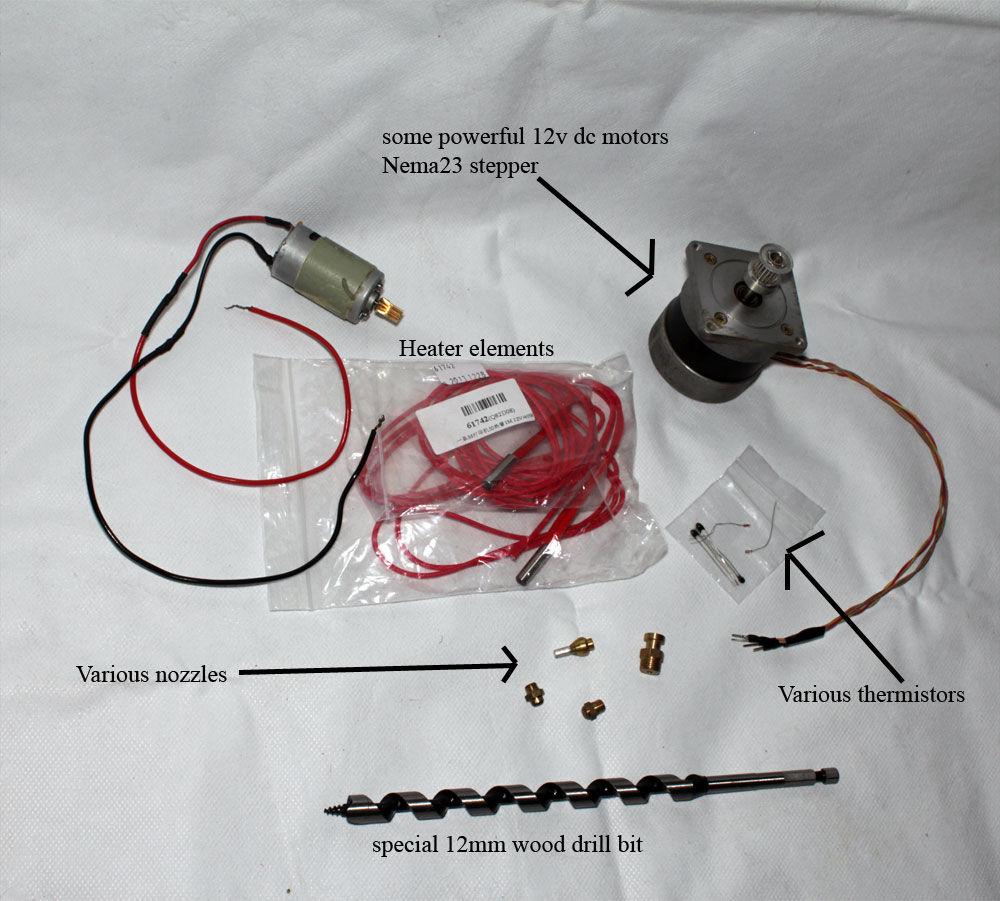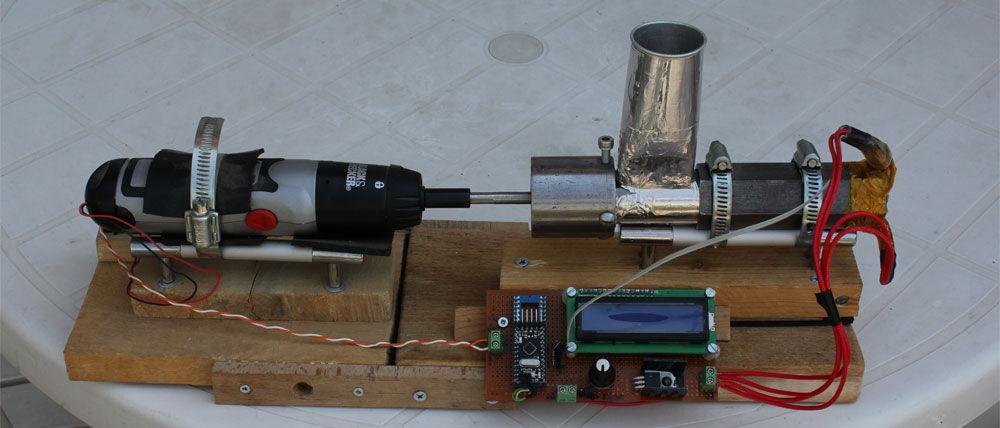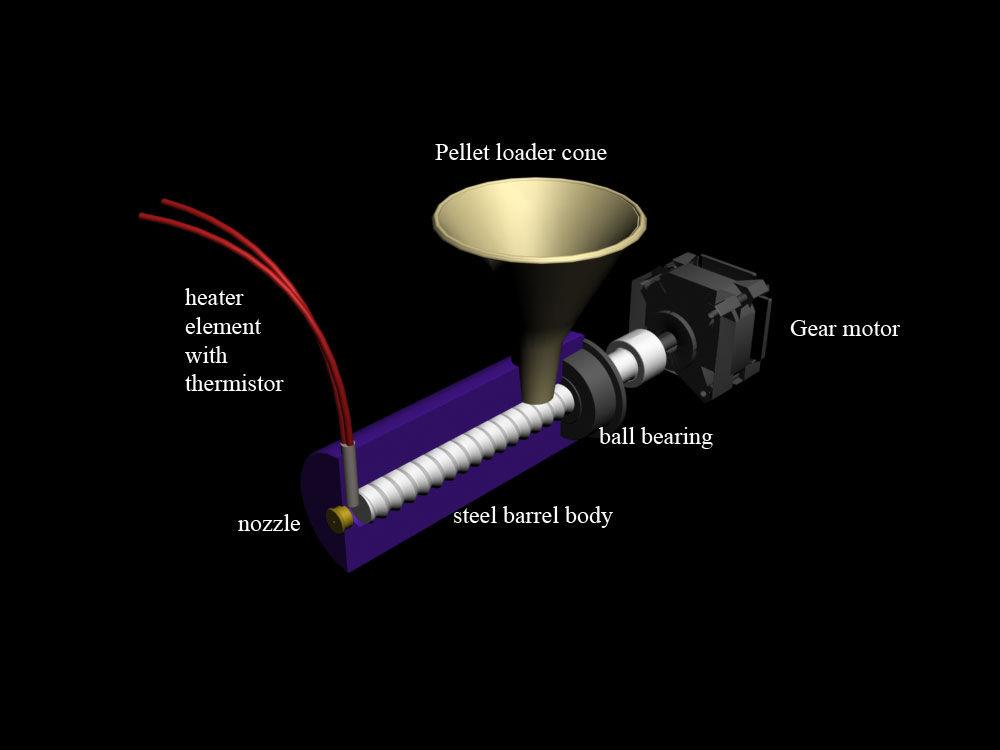Costs have certainly dropped over the years, but 3D printing could never be accused of being an inexpensive hobby. While the average price of a 3D printer is around one to two thousand dollars, the hidden cost of printing materials is the real area where 3D printing becomes a hobby recommended for someone with access to a significant disposable income.
Typically about five pounds of PLA will cost between forty and fifty dollars, and while that sounds like a lot of material any 3D printer owner will tell you that filament goes a lot faster than you’d imagine. Once you factor in things like failed prints, misprints, the amount of supports required for your print, and infill levels those five pounds of filament can disappear in a flash.
Part of the high cost of 3D printing materials is the actual cost to extrude the plastic material into the filament required for most 3D printers. While there are a few models of printers that are capable of using the much more affordable raw plastic pellets, that isn’t very a common feature. The market has responded by offering ancillary products that can help users create their own filaments at home, but those extrusion machines can often rival 3D printers in cost, which kind of cancels out any savings gained from creating your own filament at home.
 Thankfully 3D printing is not an industry built on money, but rather on the adaptability and creativity of the maker community. In that spirit, Instructables user Dinçer Hepgüler, who goes by borsaci06 on Instructables and Borasci online, has created his own homemade filament extruder using readily available parts. His DIY Filastruder Instructable gives you a list of all of the basic components needed to make one, as well as all of the information to guide you on your own build. But this probably is not a project for a beginner, and you’re going to need to know some DIY and coding basics to get started. [Also note that Borasci’s version is not the same product as the Filastruder Tim Elmore funded successfully on Kickstarter back in 2013.]
Thankfully 3D printing is not an industry built on money, but rather on the adaptability and creativity of the maker community. In that spirit, Instructables user Dinçer Hepgüler, who goes by borsaci06 on Instructables and Borasci online, has created his own homemade filament extruder using readily available parts. His DIY Filastruder Instructable gives you a list of all of the basic components needed to make one, as well as all of the information to guide you on your own build. But this probably is not a project for a beginner, and you’re going to need to know some DIY and coding basics to get started. [Also note that Borasci’s version is not the same product as the Filastruder Tim Elmore funded successfully on Kickstarter back in 2013.]
The basic parts that you’ll need are: a metal body that contains the screw mechanism to extrude the filament, two cartridge heaters, a 100k thermistor, IRLZ44 Mosfet, and a powerful stepper motor, or if you’re really hacking it together a reclaimed hand drill will work. You’ll also need to know how to work with Arduino and do some basic coding.
Borsaci created a simple CAD model detailing the parts that are needed to construct the Filastruder and how they work in relation to each other. The design is pretty basic; the plastic pellets go into a feeding cone that loads them into the heating element that melts the plastic. The stepper motor turns a screw-shaped barrel, which forces the melted plastic out to the extruder nozzle creating the new filament.
Depending on the type of 3D printer that you have, the design can be modified with different sized brass nozzles in order to produce 1.75mm filament or 3.0mm filament. Because the plastic cools very quickly once extruded you simply need to catch it as it comes out and it should solidify before it even reaches the ground.
The only real concern is making sure that the plastic is being exposed to the same temperature consistently. Borsaci chose to monitor the temperature with an Arduino controlled heater and thermistor combination so he can adjust the temperature for use with multiple materials. But if you’re only planning on creating one type of material you can simply use a less expensive constant temperature PTC thermostat and save yourself the Arduino coding.
All in all, you could easily construct your own filament extruder for almost nothing depending on the amount of scrap parts and components you have access to. Even buying parts new will cost you next to nothing. Considering raw plastic pellets can cost as little as a third as much as standard filament, building your own Filastruder could potentially save you hundreds of dollars per year. Borasci laid out more details on this project and several others on his own website, as well.
Of course an Instructable like this isn’t a simple DIY project for a new maker, but the potential savings may make it worth the effort for an experienced maker. Do you think that you could build your own filament extruder, or improve on the design of this one? Tell us about it on the DIY Filastruder forum thread over on 3DPB.com.
Subscribe to Our Email Newsletter
Stay up-to-date on all the latest news from the 3D printing industry and receive information and offers from third party vendors.
You May Also Like
Precision at the Microscale: UK Researchers Advance Medical Devices with BMF’s 3D Printing Tech
University of Nottingham researchers are using Boston Micro Fabrication‘s (BMF) 3D printing technology to develop medical devices that improve compatibility with human tissue. Funded by a UK grant, this project...
3D Printing Webinar and Event Roundup: April 21, 2024
It’s another busy week of webinars and events, starting with Hannover Messe in Germany and continuing with Metalcasting Congress, Chinaplas, TechBlick’s Innovation Festival, and more. Stratasys continues its advanced training...
3D Printing Webinar and Event Roundup: March 17, 2024
It’s another busy week of webinars and events, including SALMED 2024 and AM Forum in Berlin. Stratasys continues its in-person training and is offering two webinars, ASTM is holding a...
3D Printed Micro Antenna is 15% Smaller and 6X Lighter
Horizon Microtechnologies has achieved success in creating a high-frequency D-Band horn antenna through micro 3D printing. However, this achievement did not rely solely on 3D printing; it involved a combination...































